COVER
Forword
Preface
Contents
Chapter
ONE Curve and Surface Basics
1.1 Implicit and Parametric Forms
1.2
Power Basis Form of a Curve
1.3 Bézier Curves
1.4 Rational Bézier Curves
1.5 Tensor Product Surfaces
Exercises
Chapter TWO
B-Spline Basis Functions
2.1 Introduction
2.2 Definition and Properties of B-spline Basis Functions
2.3 Derivatives of B-spline Basis Functions
2.4 Further Properties of the Basis Functions
2.5 Computational Algorithms
Exercises
Chapter THREE B-spline Curves and Surfaces
3.1 Introduction
3.2 The Definition and Properties of B-spline Curves
3.3 The Derivatives of a B-spline Curve
3.4 Definition and Properties of B-spline Surfaces
3.5 Derivatives of a B-spline Surface
Exercises
Chapter FOUR Rational B-spline Curves and Surfaces
4.1 Introduction
4.2 Definition and Properties of NURBS Curves
4.3 Derivatives of a NURBS Curve
4.4 Definition and Properties of NURBS Surfaces
4.5 Derivatives of a NURBS Surface
Exercises
Chapter FIVE Fundamental Geometric Algorithms
5.1 Introduction
5.2 Knot Insertion
5.3 Knot Refinement
5.4 Knot Removal
5.5 Degree Elevation
5.6 Degree Reduction
Exercises
Chapter SIX Advanced Geometric Algorithms
6.1 Point Inversion and Projection for Curves and Surfaces
6.2 Surface Tangent Vector Inversion
6.3 Transformations and Projections of Curves and Surfaces
6.4 Reparameterization of NURBS Curves and Surfaces
6.5 Curve and Surface Reversal
6.6 Conversion Between B-spline and Piecewise Power Basis Forms
Exercises
Chapter SEVEN Conics and Circles
7.1 Introduction
7.2 Various Forms for Representing Conics
7.3 The Quadratic Rational Bézier Arc
7.4 Infinite Control Points
7.5 Construction of Circles
7.6 Construction of Conics
7.7 Conic Type Classification and Form Conversion
7.8 Higher Order Circles
Exercises
Chapter EIGHT Construction of Common Surfaces
8.1 Introduction
8.2 Bilinear Surfaces
8.3 The General Cylinder
8.4 The Ruled Surface
8.5 The Surface of Revolution
8.6 Nonuniform Scaling of Surfaces
8.7 A Three-sided Spherical Surface
Chapter
NINE Curve and Surface Fitting
9.1 Introduction
9.2 Global Interpolation
9.2.1 GLOBAL CURVE INTERPOLATION TO POINT DATA
9.2.2 GLOBAL CURVE INTERPOLATION WITH END DERIVATIVES SPECIFIED
9.2.3 CUBIC SPLINE CURVE INTERPOLATION
9.2.4 GLOBAL CURVE INTERPOLATION WITH FIRST DERIVATIVES SPECIFIED
9.2.5 GLOBAL SURFACE INTERPOLATION
9.3 Local Interpolation
9.3.1 LOCAL CURVE INTERPOLATION PRELIMINARIES
9.3.2 LOCAL PARABOLIC CURVE INTERPOLATION
9.3.3 LOCAL RATIONAL QUADRATIC CURVE INTERPOLATION
9.3.4 LOCAL CUBIC CURVE INTERPOLATION
9.3.5 LOCAL BICUBIC SURFACE INTERPOLATION
9.4 Global Approximation
9.4.1 LEAST SQUARES CURVE APPROXIMATION
9.4.2 WEIGHTED AND CONSTRAINED LEAST SQUARES CURVE FITTING
9.4.3 LEAST SQUARES SURFACE APPROXIMATION
9.4.4 APPROXIMATION TO WITHIN ASPECIFIED ACCURACY
9.5 Local Approximation
9.5.1 LOCAL RATIONAL QUADRATIC CURVE APPROXIMATION
9.5.2 LOCAL NONRATIONAL CUBIC CURVE APPROXIMATION
Exercises
Chapter TEN Advanced Surface Construction Techniques
10.1 Introduction
10.2 Swung Surfaces
10.3 Skinned Surfaces
10.4 Swept Surfaces
10.5 Interpolation of a Bidirectional Curve Network
10.6 Coons Surfaces
Chapter ELEVEN Shape Modification Tools
11.1 Introduction
11.2 Control Point Repositioning
11.3 Weight Modification
11.3.1 MODIFICATION OF ONE CURVE WEIGHT
11.3.2 MODIFICATION OF TWO NEIGHBORING CURVE WEIGHTS
11.3.3 MODIFICATION OF ONE SURFACE WEIGHT
11.4 Shape Operators
11.4.1 WARPING
11.4.2 FLATTENING
11.4.3 BENDING
11.5 Constraint-based Curve and Surface Shaping
11.5.1 CONSTRAINT-BASED CURVE MODIFICATION
11.5.2 CONSTRAINT-BASED SURFACE MODIFICATION
Chapter TWELVE Standards and Data Exchange
12.1 Introduction
12.2 Knot Vectors
12.3 NURBS Within the Standards
12.3.1 IGES
12.3.2 STEP
12.3.3 PRIGS
12.4 Data Exchange to and from a NURBS System
Chapter THIRTEEN B-spline Programming Concepts
13.1 Introduction
13.2 Data Types and Portability
13.3 Data Structures
13.4 Memory Allocation
13.5 Error Control
13.6 Utility Routines
13.7 Arithmetic Routines
13.8 Example Programs
13.9 Additional Structures
13.10 System Structure
References
Index
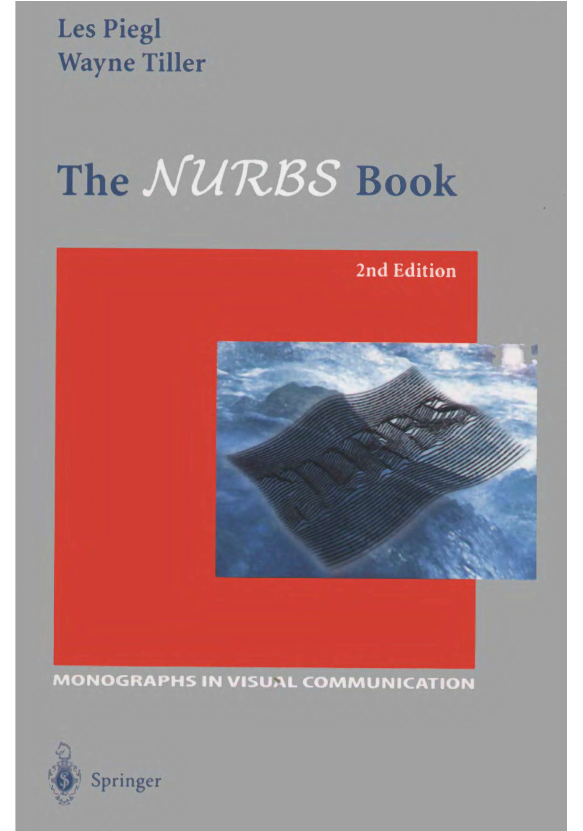
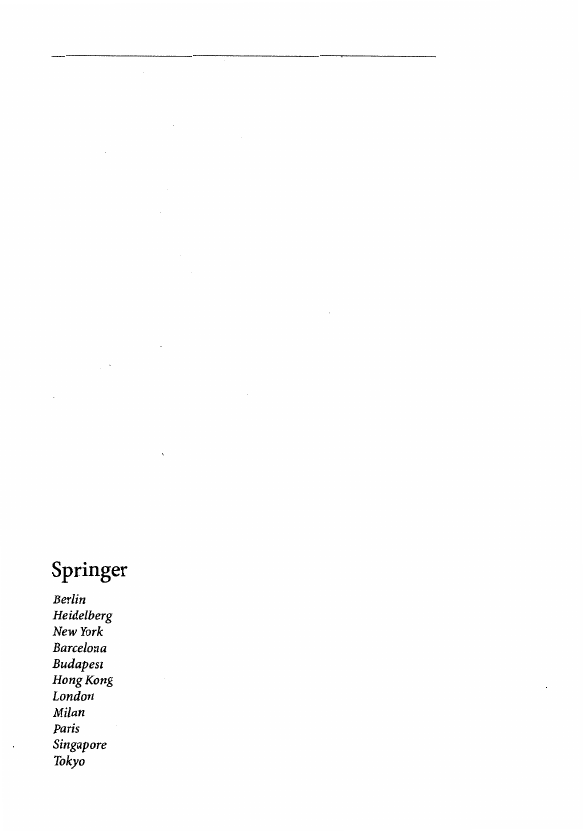
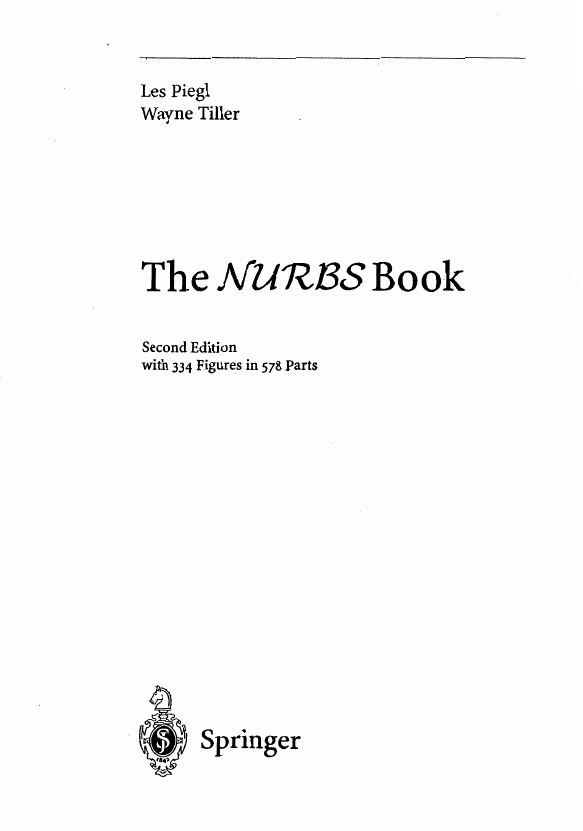


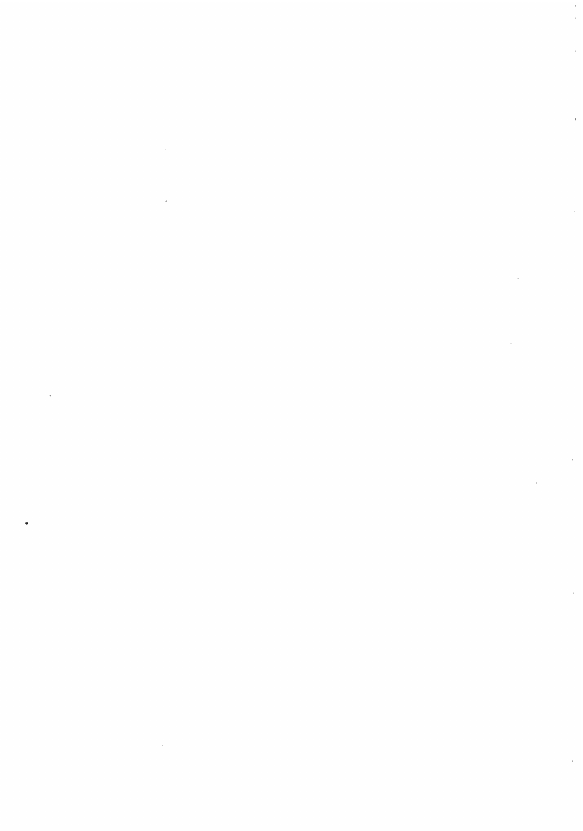
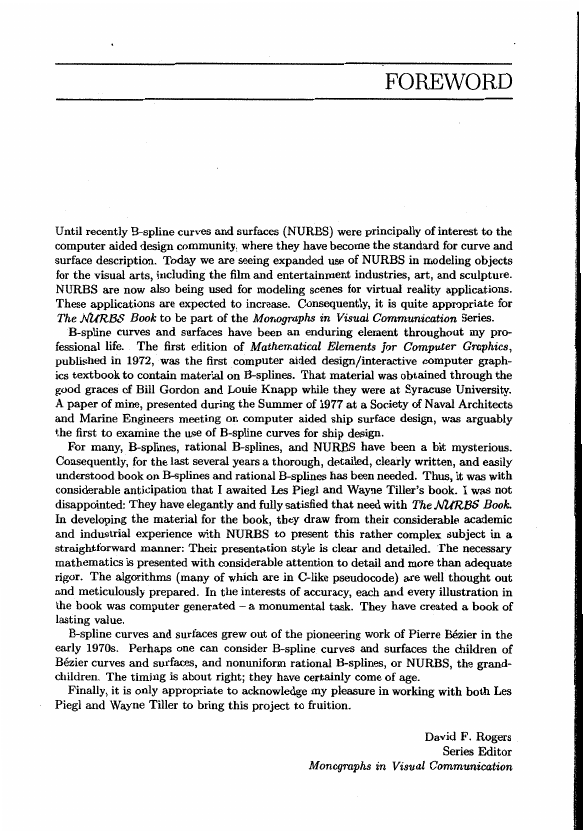









 2023年江西萍乡中考道德与法治真题及答案.doc
2023年江西萍乡中考道德与法治真题及答案.doc 2012年重庆南川中考生物真题及答案.doc
2012年重庆南川中考生物真题及答案.doc 2013年江西师范大学地理学综合及文艺理论基础考研真题.doc
2013年江西师范大学地理学综合及文艺理论基础考研真题.doc 2020年四川甘孜小升初语文真题及答案I卷.doc
2020年四川甘孜小升初语文真题及答案I卷.doc 2020年注册岩土工程师专业基础考试真题及答案.doc
2020年注册岩土工程师专业基础考试真题及答案.doc 2023-2024学年福建省厦门市九年级上学期数学月考试题及答案.doc
2023-2024学年福建省厦门市九年级上学期数学月考试题及答案.doc 2021-2022学年辽宁省沈阳市大东区九年级上学期语文期末试题及答案.doc
2021-2022学年辽宁省沈阳市大东区九年级上学期语文期末试题及答案.doc 2022-2023学年北京东城区初三第一学期物理期末试卷及答案.doc
2022-2023学年北京东城区初三第一学期物理期末试卷及答案.doc 2018上半年江西教师资格初中地理学科知识与教学能力真题及答案.doc
2018上半年江西教师资格初中地理学科知识与教学能力真题及答案.doc 2012年河北国家公务员申论考试真题及答案-省级.doc
2012年河北国家公务员申论考试真题及答案-省级.doc 2020-2021学年江苏省扬州市江都区邵樊片九年级上学期数学第一次质量检测试题及答案.doc
2020-2021学年江苏省扬州市江都区邵樊片九年级上学期数学第一次质量检测试题及答案.doc 2022下半年黑龙江教师资格证中学综合素质真题及答案.doc
2022下半年黑龙江教师资格证中学综合素质真题及答案.doc